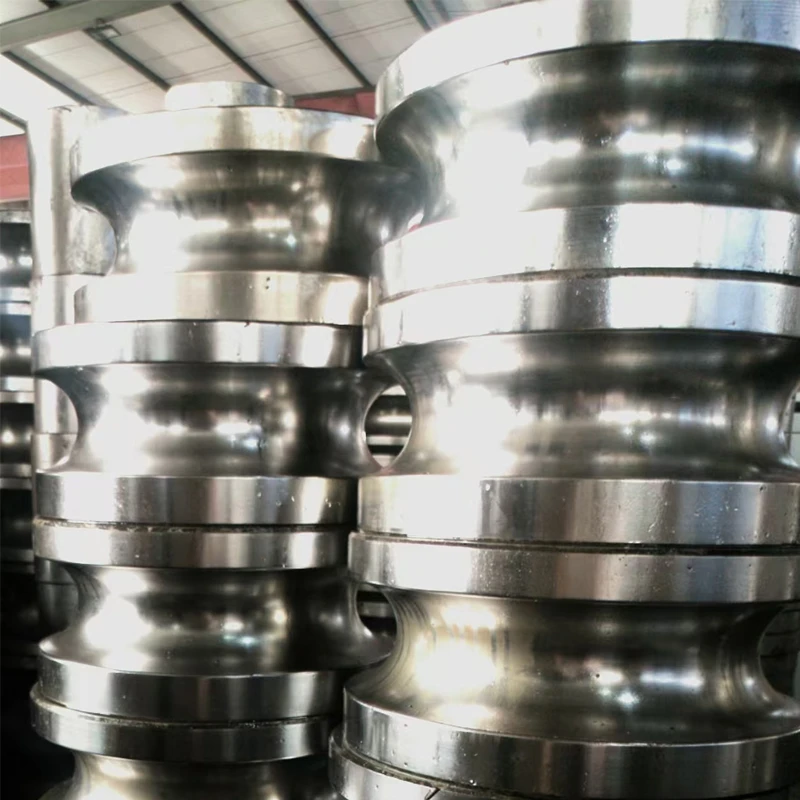roll forming tube
Understanding Roll Forming of Tubes A Comprehensive Overview
Roll forming is a highly efficient manufacturing process used to create complex cross-sectional shapes from metal sheets. Among its applications, roll forming tubes exhibits a unique significance due to the versatility and efficiency it provides in producing long lengths of tube-like structures. This article delves into the roll forming process, its benefits, applications, and the types of materials that are commonly used.
The Roll Forming Process
Roll forming involves feeding a flat strip of metal through a series of rollers that gradually bend the material into the desired shape. The process starts by adjusting the roller configuration to achieve the desired cross-section, which can range from simple round tubes to more intricate designs.
A continuous strip of material, usually cold-rolled steel, aluminum, or other alloys, is fed into the roll forming machine. The rollers apply pressure and gradually shape the material as it moves forward. The process is continuous, allowing for high production rates and efficiency. After forming, the tubes can undergo additional processes like welding, cutting, or finishing to meet specific requirements.
Advantages of Roll Forming Tubes
1. Continuous Production One of the primary advantages of roll forming is its ability to produce long lengths of product with minimal waste. The continuous feed allows for consistent output, reducing operational downtime and increasing productivity.
2. Precision and Tolerance Roll forming offers high precision in terms of shape and dimensional tolerances. This makes it ideal for applications requiring tight specifications, such as automotive and structural components.
3. Material Efficiency The roll forming process significantly reduces material waste compared to traditional milling or cutting methods. The shaping occurs without removing excess material, making it an environmentally friendly option.
4. Versatility in Design The process can accommodate a wide range of designs and profiles, from simple geometries to complex shapes. This adaptability enables engineers and designers to innovate without being constrained by manufacturing limitations.
5. Cost-Effectiveness While the initial setup for roll forming can be more expensive due to the need for specialized tooling, the long-term benefits, including lower production costs and material waste, often outweigh these initial costs.
Applications of Roll Formed Tubes
roll forming tube

Roll formed tubes are widely used across various industries due to their strength and durability. Key applications include
- Automotive Industry Roll formed tubes are used in car frames, bumpers, and support structures. Their lightweight nature helps improve fuel efficiency while maintaining structural integrity.
- Construction In the construction industry, roll formed tubes are employed for structural supports, railings, and as part of building frameworks. Their strength and durability make them ideal for both residential and commercial projects.
- Furniture Manufacturing Roll formed tubes are increasingly used in creating furniture frames and support structures due to their aesthetic appeal and strength.
- HVAC Systems These tubes are also found in heating, ventilation, and air conditioning systems, providing essential support and airflow pathways.
Materials Used in Roll Forming Tubes
The choice of material significantly impacts the performance and application of roll formed tubes. Common materials include
- Steel Cold-rolled and galvanized steel are frequently used due to their strength, cost-effectiveness, and ability to withstand harsh environmental conditions.
- Aluminum Lightweight and resistant to corrosion, aluminum tubes are ideal for industries that prioritize weight savings and aesthetics.
- Stainless Steel Known for its durability and resistance to corrosion, stainless steel is often used in applications requiring high sanitation standards, such as in food processing.
Conclusion
Roll forming tubes represent a fascinating blend of engineering, efficiency, and versatility. The ability to produce precise, long lengths of tubular shapes with reduced material waste makes it a preferred choice in many industries. As technology advances and demand for customized solutions grows, the role of roll forming in manufacturing will undoubtedly continue to expand, offering innovative solutions for modern engineering challenges. Whether in automotive, construction, or furniture design, the application of roll formed tubes is vast, driving efficiency and enhancing product performance across numerous sectors.
-
High Frequency Straight Seam Welded Pipe Production Line-BzZhou Xinghua Machinery Equipment Manufacturing Co., LTD.|line pipe steel&welded gas pipeNewsJul.30,2025
-
High Frequency Straight Seam Welded Pipe Production Line-BzZhou Xinghua Machinery Equipment Manufacturing Co., LTD.|High Precision&Automated SolutionsNewsJul.30,2025
-
High Frequency Straight Seam Welded Pipe Production Line - BzZhou Xinghua Machinery Equipment Manufacturing Co., Ltd.NewsJul.30,2025
-
High Frequency Straight Seam Welded Pipe Production Line-BzZhou Xinghua Machinery Equipment Manufacturing Co., LTD.|Precision Welding, High EfficiencyNewsJul.30,2025
-
High Frequency Straight Seam Welded Pipe Production Line|BzZhou Xinghua|Precision Welding&EfficiencyNewsJul.30,2025
-
High Frequency Straight Seam Welded Pipe Production Line - BzZhou Xinghua|Precision Engineering&EfficiencyNewsJul.30,2025


